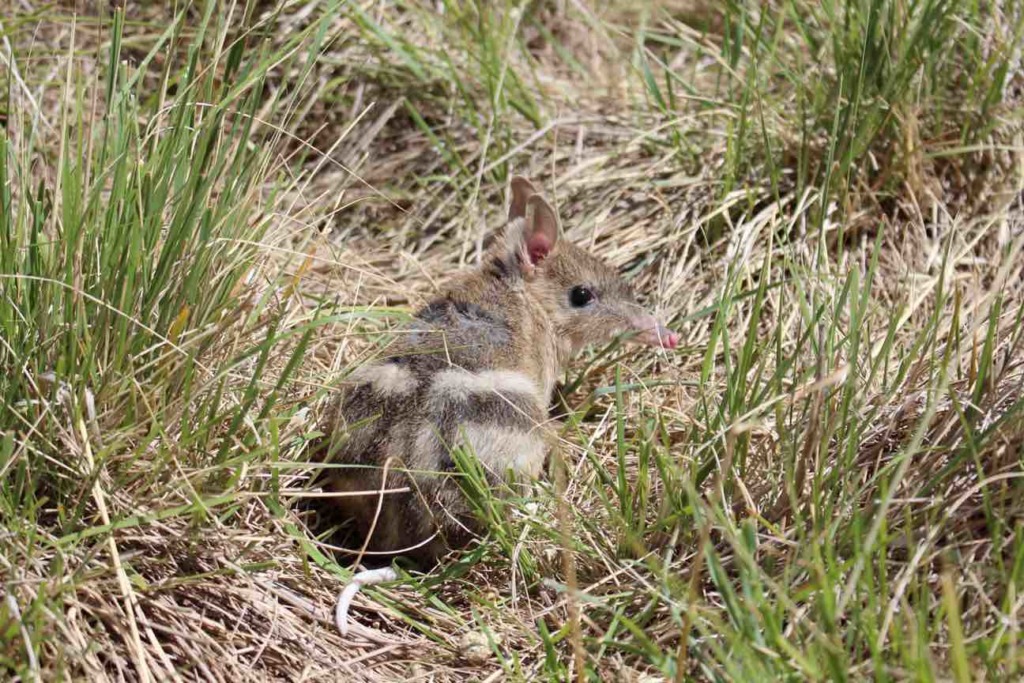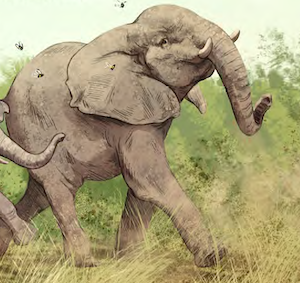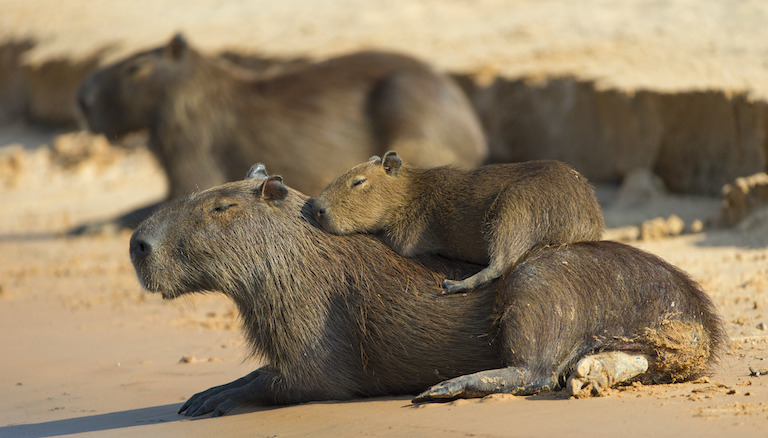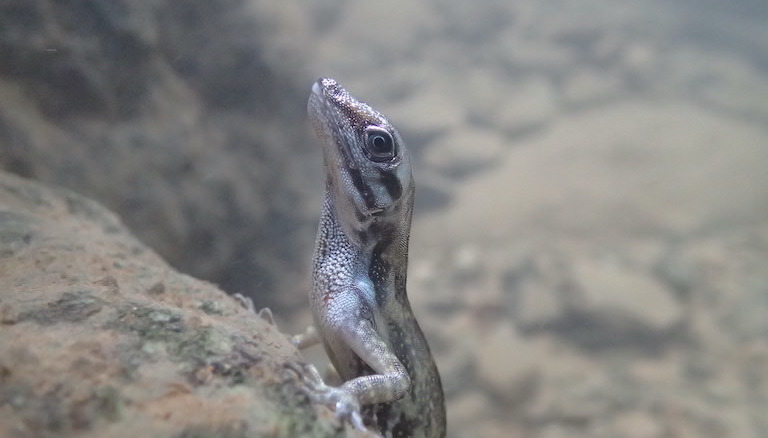
An eastern barred bandicoot in Australia. Image: Zoos Victoria
It’s an exciting day for the eastern barred bandicoot!
After a more than 30-year effort by a dedicated team of people (with some help from a few dogs), this adorable Australian animal has an opportunity to thrive in the wild once again.
What is the eastern barred bandicoot?
It is a small, furry marsupial animal, about the size of a rabbit. It has large ears and a long, pointed nose. It lives in grasslands and grassy woodlands, where it is active at night, bouncing through the grass at high speed! (Watch the video at the bottom of the page to see this bandicoot in action.)
The eastern barred bandicoot is an omnivore – it eats things like crickets, worms, and beetles. It also eats tubers, berries, and other plant material.
Eastern barred bandicoots are important to the ecosystems where they live. They dig and turn over large amounts of soil in search of food, which improves soil health and moisture.
What happened to the eastern barred bandicoot?
In the past, eastern barred bandicoots were widespread in grasslands across parts of Australia, including the states of Victoria and Tasmania (an island state off the south coast of mainland Australia). While the bandicoots survived in Tasmania, sadly, the loss of their habitat and killing by foxes and cats reduced their numbers on the mainland.
In 1989, there were only 150 or so of these bandicoots left in the wild in Victoria. In 2013, eastern barred bandicoots were declared extinct in the wild on mainland Australia.
Find Victoria on the map!
Conservation team to the rescue!
Luckily, in 1988 a special recovery team was put together with the goal of saving this species.
Step 1) Successfully breed eastern barred bandicoots
One of the partners in this massive conservation effort, Zoos Victoria, has bred close to 1200 eastern barred bandicoots in captivity over a 30-year period. Animals were bred for release into the wild.
Step 2) Release the bandicoots back into the wild and keep them protected from predators
The recovery team has released eastern barred bandicoots into grassland habitat in several areas of Victoria. Some of these release sites are fenced to keep out predators. Some bandicoots have been released on predator-free islands.
In some of the release sites, Maremma sheepdogs have been trained to act as bandicoot guardians! The dogs don’t actively guard the bandicoots. In fact, they are trained to ignore them – in other words, to not chase them! The dogs are instead bonded with sheep, and they all live side by side. Just by being present and guarding their territory, the sheepdogs successfully keep foxes away, thereby protecting the bandicoots.
Step 3) Keep an eye on the success of the project
It has been an epic job, but the result so far is exciting! Today, there are about 1500 eastern barred bandicoots living in the wild in Victoria. Their progress will be monitored to see how the populations grow.
On September 15th, 2021 the eastern barred bandicoot was reclassified as endangered. It is the first time in Australia that an animal classified as extinct in the wild has been reclassified. This is a big day for this little animal and its dedicated conservation team!
This video shows this conservation success story in action!
Video courtesy of Zoos Victoria.
References:
https://www.swifft.net.au/cb_pages/sp_eastern_barred_bandicoot
https://museumsvictoria.com.au/melbournemuseum/resources/wild/grasslands/eastern-barred-bandicoot/
https://www.premier.vic.gov.au/eastern-barred-bandicoots-brought-back-extinction
*Mongabay Kids is not responsible for content published on external sites.






